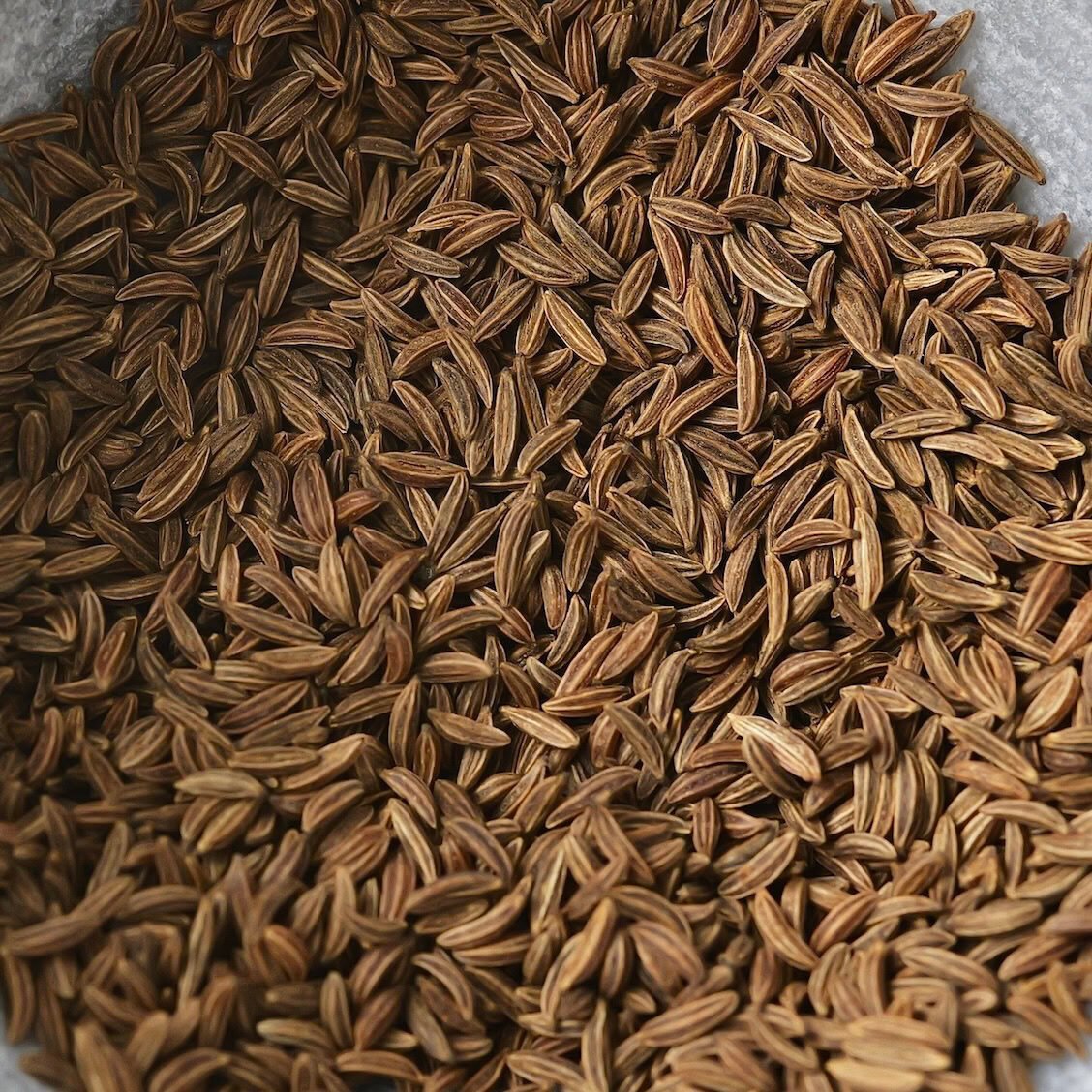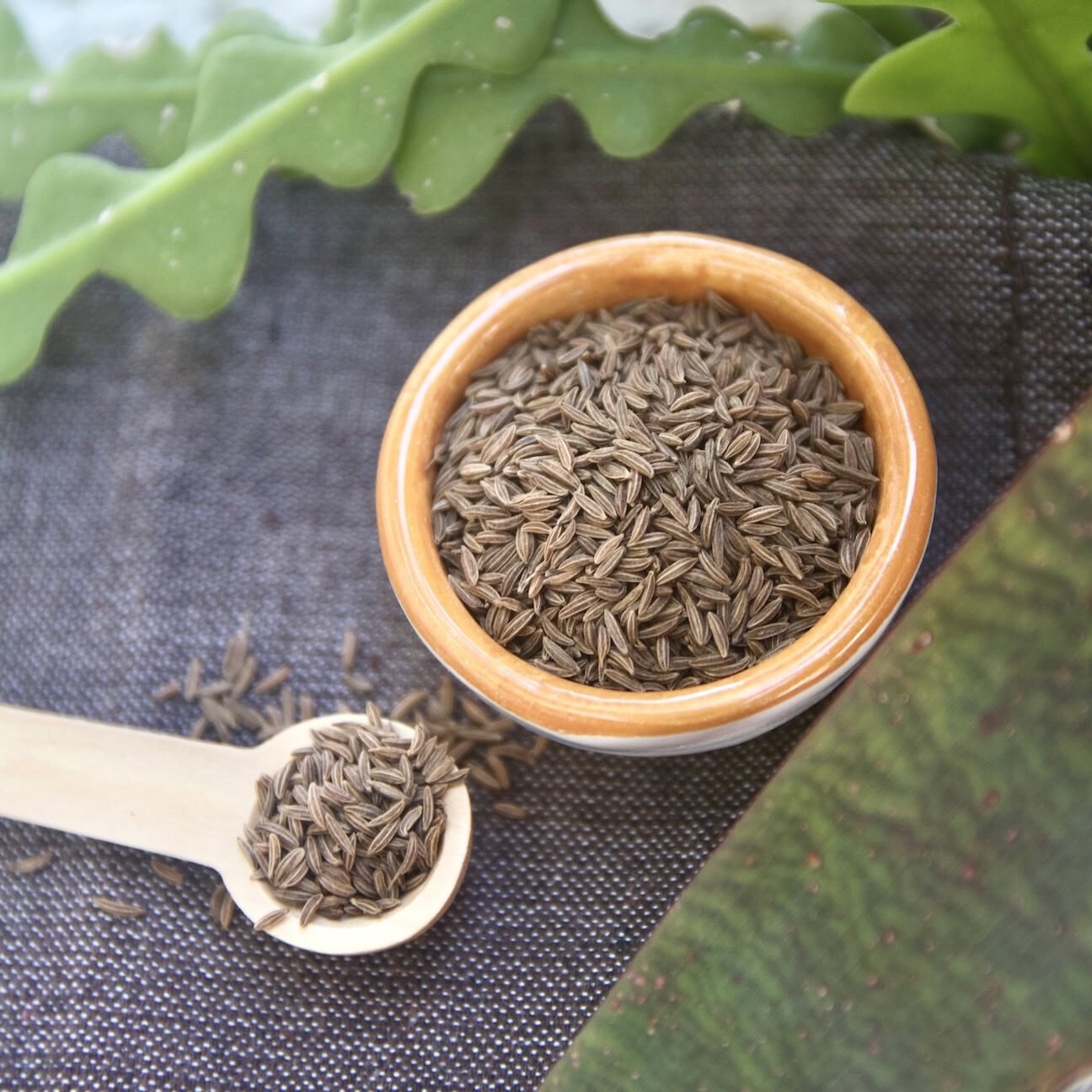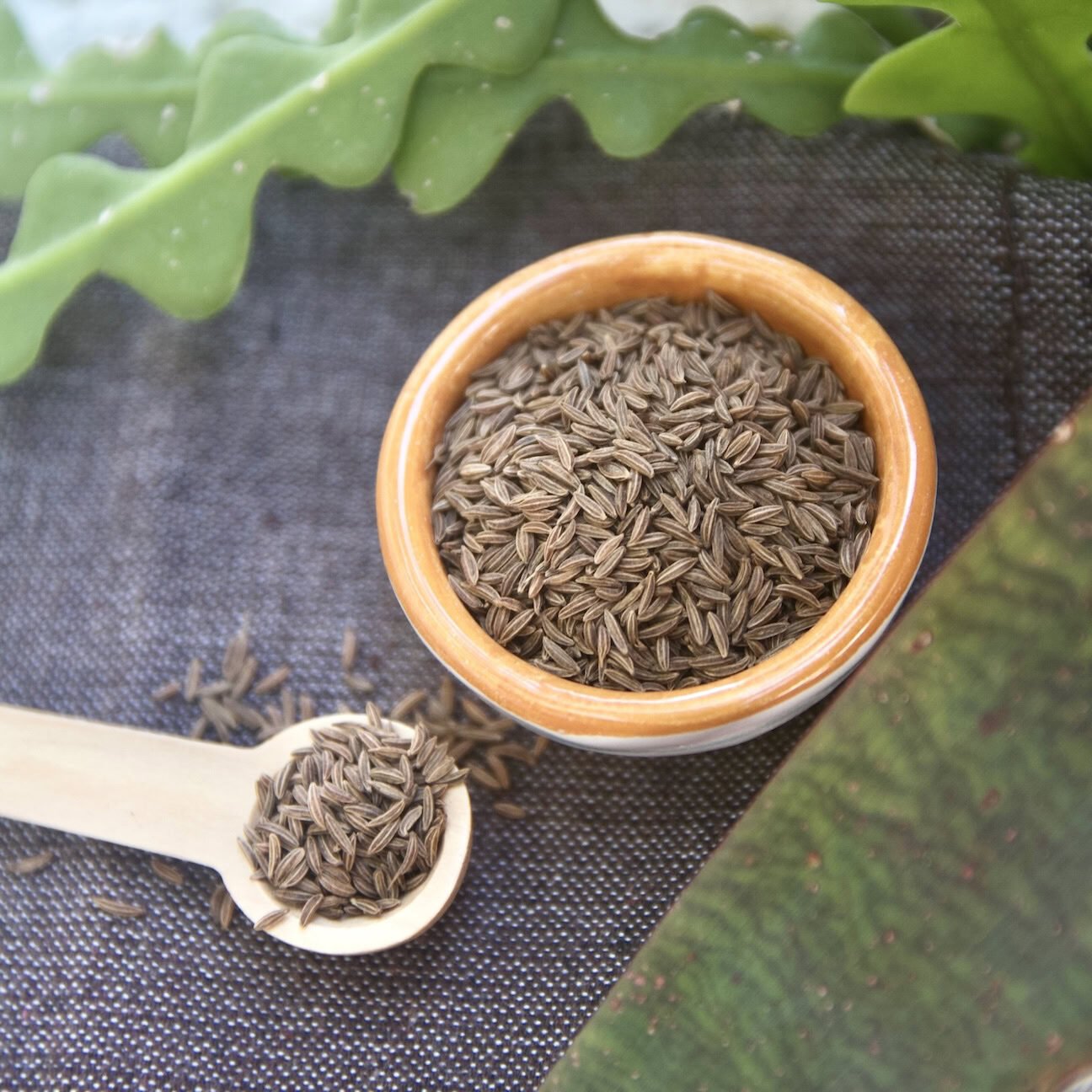Caraway
Caraway is the spice produced from the tiny fruit (often called "seeds") of Carum carvi, a biennial herb in the parsley family.

REGION OF ORIGIN
The Mediterranean. While its precise origin remains a mystery, caraway's roots trace back to Europe, North Africa, and the Middle East. Carum carvi flourishes in various climates, from temperate to semi-arid. Its adaptability strongly contributes to its widespread cultivation.
PART & COLOR
Caraway "seeds" are actually tiny dried fruits called schizocarps. Thin and slightly curved with five pale ridges, they range in color from warm amber to deep brown. The plant's feathery green leaves and white flower petals can also be used as a garnish or in salads.
HARVEST
Carum carvi thrives in full sun and well-drained soil. It is usually planted in the spring and the seeds are ready for harvest in the late summer or early autumn after turning a light to medium brown color. Caraway is a biennial plant, meaning it completes its life cycle in two years, flowering in the second year. To increase efficiency, some farmers induce seed production in the first year and replant each season.

FLAVOR & AROMA PROFILE
Caraway’s captivating aroma blends warm, earthy, herbal, and sweet notes with hints of anise and pepper. A citrusy element akin to lemon or orange zest brightens it. The scent instantly reminds us of freshly baked rye bread and hearty winter stews, but with a twist of intrigue. It soothes our senses while enticing our curiosity.
On the palate, caraway delivers an initial rush of bittersweetness followed by a light warmth and a touch of spice. Dill, fennel, and citrus notes linger on the tongue. While grinding the seeds releases their flavor and distributes it more evenly throughout a dish, some cooks prefer sprinkling on whole "seeds" to add a textural dimension. They offer a pleasant crunch that contrasts nicely with its smooth flavors, making the dish's mouthfeel more satisfying and the experience of caraway's flavor more explosive.
CULINARY USES
Caraway’s versatility is respected the world over. Across Europe, it is more of a tradition than a simple ingredient. It is so important to rye bread that their aromas are nearly synonymous—one reminds us of the other. In Germany, caraway is the secret behind the beloved tang of sauerkraut. It’s also essential to Austrian goulash, Hungarian cabbage rolls, Polish pierogi, and Dutch Gouda cheese. In Scandinavia, caraway flavors aquavit, a lively spirit, as well as the Danish cheese Havarti and Sweden’s iconic limpa bread. Caraway’s influence doesn’t stop there. It also graces North African spice blends like Tunisian harissa, Middle Eastern stews and breads, and Indian rice, vegetable, and curry dishes.
Have fun experimenting with it—toss caraway seeds on various roasted vegetables, infuse them into oils, vinegars, and syrups, and add them to marinades for meats and fish.



